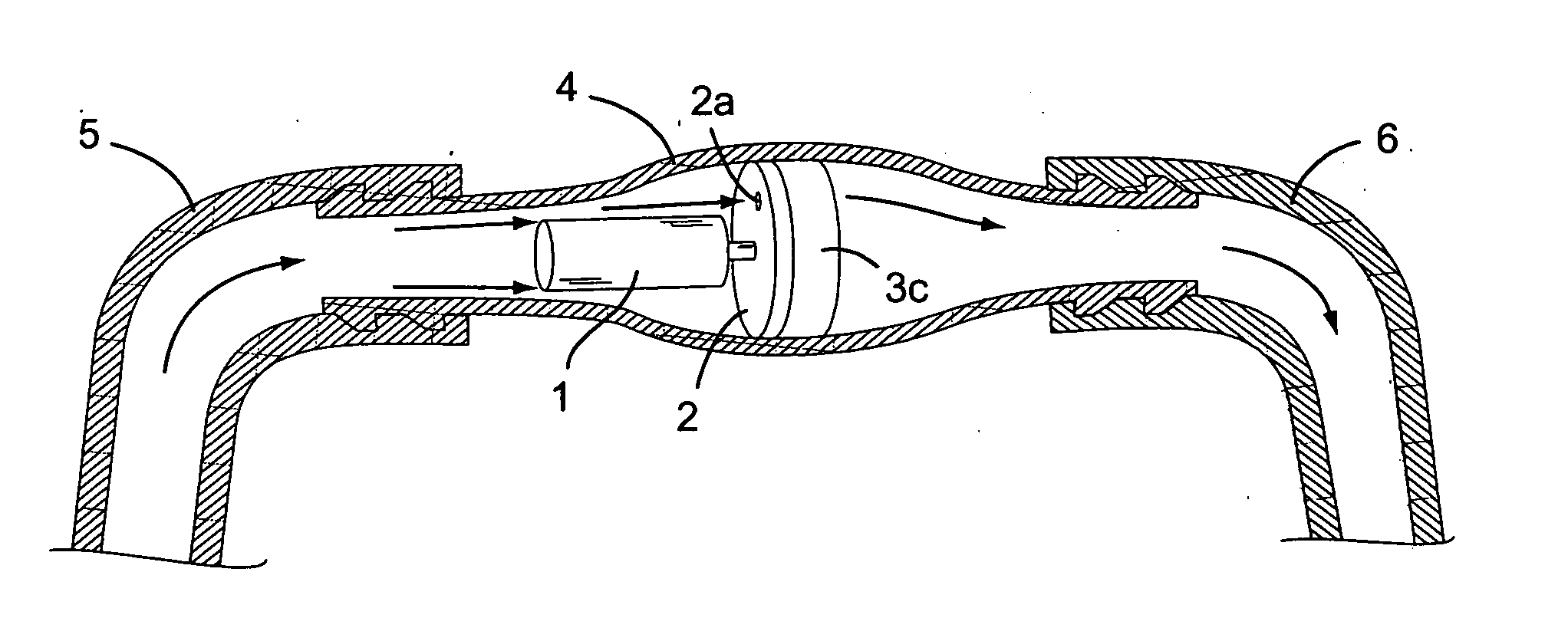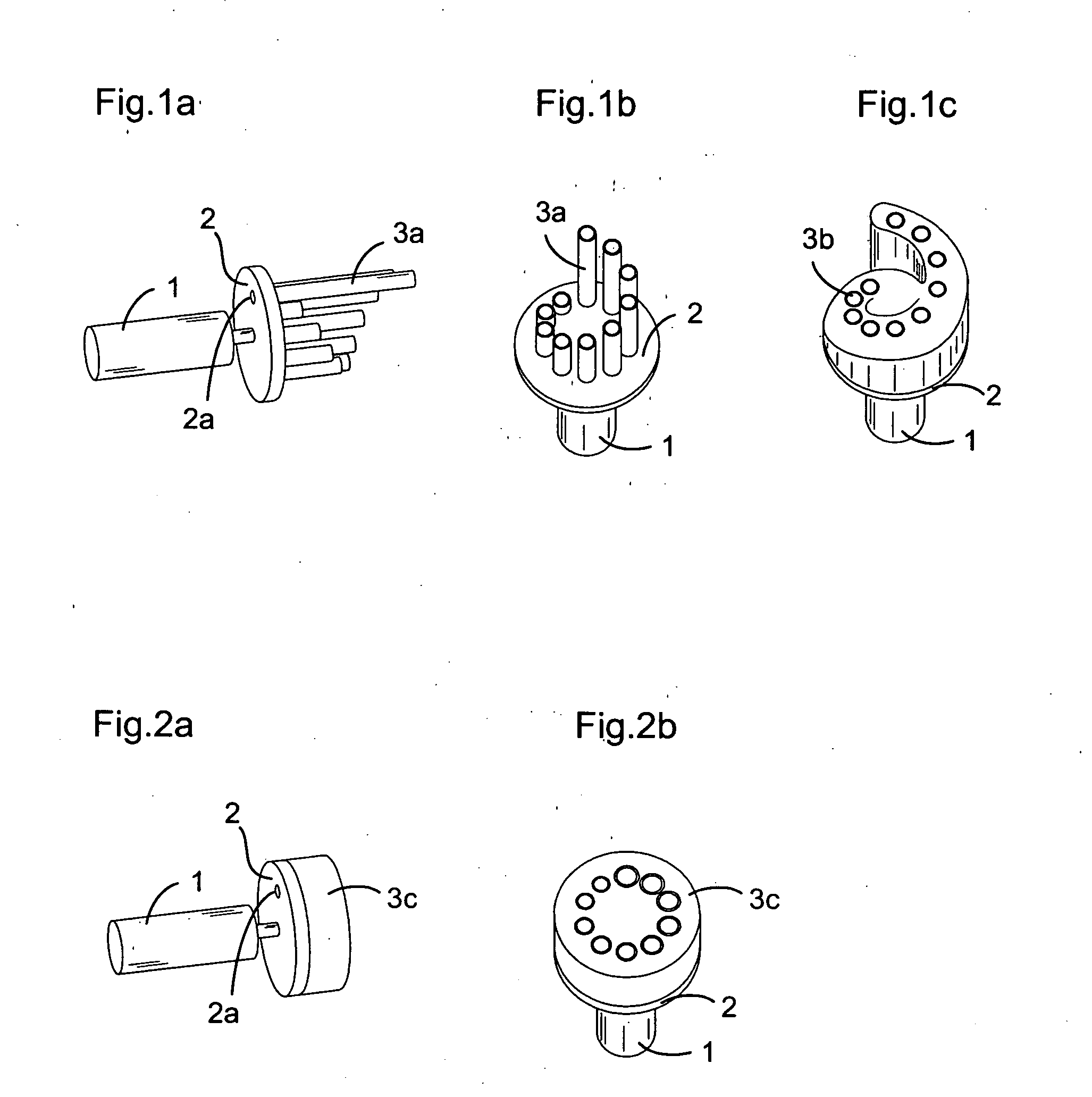Adjustable resistance valve for a cerebrospinal fluid shunt system
a cerebrospinal fluid and resistance valve technology, applied in the direction of wound drains, biocide, plant ingredients, etc., can solve the problems of hyperdrainage leading to subnormal intracranial pressure, unanticipated, and the siphoning effect and the unknown peritoneal pressure change, and achieve the effect of simple construction
- Summary
- Abstract
- Description
- Claims
- Application Information
AI Technical Summary
Benefits of technology
Problems solved by technology
Method used
Image
Examples
Embodiment Construction
[0023] The invention will now be described in detail with reference to the annexed figures which are illustrating by way of example several embodiments of the invention.
[0024] An adjustable resistance valve for a cerebrospinal fluid shunt system according to the present invention comprises, like illustrated in FIGS. 1a to 1c and 2a to 2b, an actuator 1 allowing the selection of the resistance to flow of the valve, and selecting means 2 with at least one passage 2a traversing these selecting means. A preferential realization of such selecting means is a disc 2 with at least one passage 2a traversing the disc near its periphery in a direction parallel to its longitudinal axis. Furthermore, an adjustable resistance valve according to the present invention comprises a resistance system 3 comprising a set of passages defining each a different resistance to flow, the passages being situated around a circle facing the selecting means 2 such as to guide the flow of the cerebrospinal fluid ...
PUM
 Login to View More
Login to View More Abstract
Description
Claims
Application Information
 Login to View More
Login to View More - R&D
- Intellectual Property
- Life Sciences
- Materials
- Tech Scout
- Unparalleled Data Quality
- Higher Quality Content
- 60% Fewer Hallucinations
Browse by: Latest US Patents, China's latest patents, Technical Efficacy Thesaurus, Application Domain, Technology Topic, Popular Technical Reports.
© 2025 PatSnap. All rights reserved.Legal|Privacy policy|Modern Slavery Act Transparency Statement|Sitemap|About US| Contact US: help@patsnap.com



